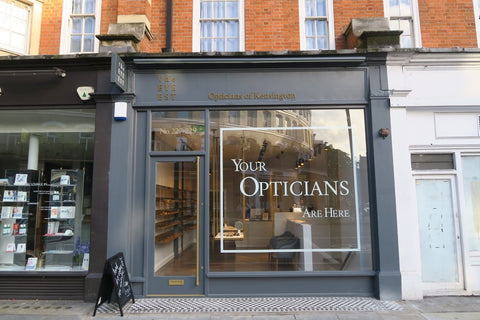What are the 4 most common eye problems?
Experiencing eye problems can happen at any age and in many situations can be very disorientating. Sight is one of the most important senses we have and understanding what could be causing any changes is key to recognising when it’s time for an eye test. In this article, we’ll look at the four most common eye problems, their symptoms and the treatment options available.
The 4 most common eye problems
1. Age-related macular degeneration
Also known as AMD, age-related macular degeneration is a common eye disease that impacts the central part of the retina. It is associated with ageing and tends to present symptoms once a person reaches 60 years and older. The macula thins over time as part of the ageing process, breaking down the light-sensitive cells here and impacting the quality of your vision. As this condition progresses gradually, the first signs are normally yellow or white deposits seen underneath the retina, called drusen. There is no treatment for AMD, however photodynamic therapy and vision aids can minimise its impact on your daily life.
2. Glaucoma
Glaucoma is another common eye disease in which the optic nerve that connects the brain and the eye becomes damaged. It is typically caused by a build-up of fluid at the front of the eye which increases pressure and causes blurred vision. Some people also see rainbow-coloured circles surrounding bright lights and can even experience intense eye pain. If left undiagnosed, glaucoma can have serious implications and lead to blindness. As the disease has few early symptoms, it is often only detected during routine eye health checks, after which your optometrist can suggest several treatment methods. These include eye drops, laser treatment and even surgery to prevent your vision from worsening.
3. Cataracts
A cataract is a clouding of the eye’s lens which causes a loss of central vision. They can occur at any age, even being present at birth in some situations. There are also a variety of different causes, including injury and ageing. As the proteins and fibres in the lens begin to break down, things begin to look hazy and less clear. Cataracts are prevalent and can be removed through surgery. Ultrasound waves are used to break up the cataract before a specialist suction removes the damaged cells.
4. Amblyopia
Known most commonly as ‘lazy eye’, amblyopia is when there is a breakdown in the communication between the brain and one eye. A change in the normal nerve pathways causes the weaker eye to twist either inwards or outwards. The condition starts during childhood, developing between birth and the age of seven, and is characterised by squinting, tilting the head and shutting one eye to gain clearer vision. Premature births, low birth weight, genetics and developmental disabilities are believed to all be key causes. Amblyopia can be treated by re-training the brain and forcing the weaker eye to strengthen over time.
Regular eye checks are the only reliable way to detect eye problems early on and provide necessary treatment. If you are worried about your eyes and need an eye test in London, contact The Eye Establishment today.
